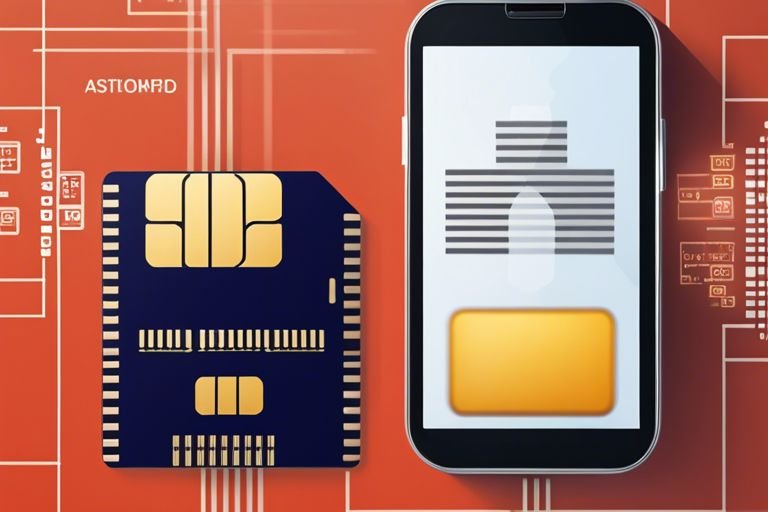
Security in mobile communications has evolved with the advent of ESIM cards, but are they truly more secure than traditional SIM cards? Let’s investigate into the intricate details and compare the levels of security between these two technologies. By understanding the nuanced differences, we can navigate the complex landscape of mobile device security with a critical eye and informed perspective.
Security Features
eSIM Card Security
The security features of embedded SIM (eSIM) cards are highly advanced, providing enhanced protection against potential threats. They are physically integrated into the device, making them tamper-resistant and harder to hack compared to traditional SIM cards.
Traditional SIM Card Security
Traditional SIM cards have been in use for a long time and have evolved with various security measures to safeguard user data. However, their external nature makes them more susceptible to physical tampering and unauthorized access.
Understanding the security of traditional SIM cards involves recognizing that while they offer a certain level of protection, their removable and external nature poses risks such as SIM swapping attacks. These attacks involve fraudsters convincing a mobile carrier to switch the phone number linked to a SIM card they control, enabling them to receive sensitive information and potentially compromise accounts. It is necessary for users to be cautious and implement additional security measures to mitigate such threats.
Vulnerabilities and Risks
eSIM Card Vulnerabilities
Little is known about eSIM card vulnerabilities compared to traditional SIM cards. As this technology is relatively new, the potential risks are still being explored. However, some concerns include the possibility of hacking during the remote provisioning process or attacks exploiting bugs in the firmware.
Traditional SIM Card Risks
Any technology that has been around for a longer time is bound to have its share of vulnerabilities. Traditional SIM cards are susceptible to various risks, such as SIM swapping attacks where fraudsters convince carriers to switch the SIM card associated with a phone number to a new one under their control. This can lead to unauthorized access to sensitive information and accounts.
Vulnerabilities in traditional SIM cards have long been a concern in the cybersecurity realm. These physical cards can be easily misplaced, lost, or stolen, providing an entry point for malicious actors to exploit. Additionally, the reliance on outdated authentication methods like SMS-based two-factor authentication poses a risk, as cybercriminals have developed sophisticated methods to intercept SMS messages.
Comparison of Security Measures
| Authentication and Authorization | Data Encryption and Protection |
|
Authorization processes play a crucial role in determining the security of both eSIM and traditional SIM cards. While traditional SIM cards rely on physical verification and PIN codes, eSIM cards use advanced authentication methods such as biometrics and digital signatures, making them more secure against unauthorized access. |
An important aspect of security, data encryption ensures that information transmitted between the eSIM card and the network is protected from potential threats. With eSIM technology, data encryption is more robust and versatile, incorporating advanced algorithms to safeguard sensitive data effectively. |
Authentication and Authorization
Authorization processes play a crucial role in determining the security of both eSIM and traditional SIM cards. While traditional SIM cards rely on physical verification and PIN codes, eSIM cards use advanced authentication methods such as biometrics and digital signatures, making them more secure against unauthorized access.
Data Encryption and Protection
An important aspect of security, data encryption ensures that information transmitted between the eSIM card and the network is protected from potential threats. With eSIM technology, data encryption is more robust and versatile, incorporating advanced algorithms to safeguard sensitive data effectively.
Understanding: Data encryption on eSIM cards involves converting data into a code to prevent unauthorized access. This encrypted data is then securely transmitted over the network, ensuring confidentiality and integrity. Compared to traditional SIM cards, eSIMs offer enhanced protection through sophisticated encryption techniques, making them a more secure choice for storing sensitive information.
To wrap up
In summarization, while eSIM cards offer improved security features such as tamper resistance and remote provisioning, they are not entirely immune to cyber threats. Traditional SIM cards also have their vulnerabilities but have been proven over time to be relatively secure. Ultimately, the security of either type of card depends on various factors, including the implementation of security measures by network providers and device manufacturers. As technology continues to evolve, staying vigilant and regularly updating security protocols will be key in safeguarding personal information stored on both eSIM and traditional SIM cards.
